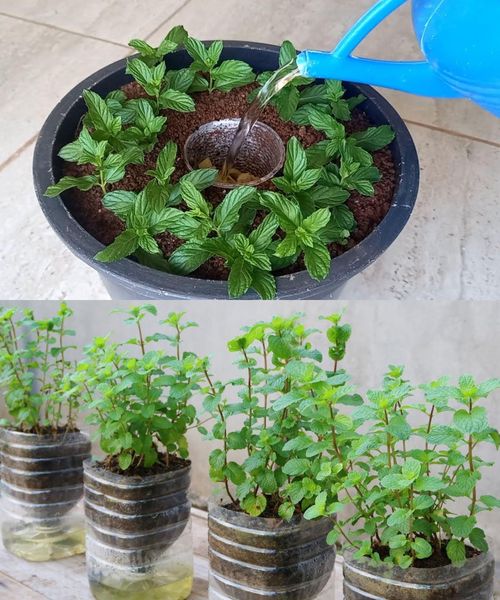Yes, mint is attractive, but most of us don’t grow herbs for their good looks. We grow them for their flavors, and what could be better than snipping your own fresh, homegrown mint leaves to make a cup of hot tea on a cold day? Since mint is constantly making new stems and leaves, you’ll always have a few sprigs ready for harvest.
Another reason to learn how to grow mint indoors is for the fragrance. Whenever I need a little pick-me-up on a dreary day, I simply pinch off a leaf, rub it between my thumb and index finger, and inhale. The fragrance of mint is energy-boosting and invigorating. You can even toss a few leaves into your bath water for a fragrant, muscle-soothing soak.
One final benefit of growing mint indoors is a lack of pests. Aside from the occasional fungus gnat, I’ve never had any houseplant pests attack my mint plants.
Sourcing mint plants for indoor growing
When considering how to grow mint indoors, your thoughts might first turn to sourcing the plants. You have several options. For me, the easiest route is to purchase a starter plant at my favorite local nursery. However, if it’s autumn or winter and you’re just learning how to grow mint indoors, you might find your local nursery out of stock. Most nurseries carry herb plants only in the spring. If this is the case for you, consider starting a new mint houseplant from a root division or a stem cutting.
Sourcing an indoor mint plant from a root division:

If you already have a mint plant growing in a container or in the ground – or if you have a friend or family member who does – it’s easy to dig up a division of the plant, pot it up, and bring it indoors. As long as there is a section of root attached to a stem, it’s a viable division. You can start with a large division or a small one. Mint grows fast, so even if you start with a tiny division, before you know it, the plant will fill your pot.
Sourcing an indoor mint plant from a stem cutting:
This method of growing mint indoors only requires a severed mint stem about 3 inches long. Mint cuttings easily take root. Simply remove the lowest leaves, stick the bottom inch of the cut stem into a pot of new potting soil, water it in, cover the pot and cutting with a plastic baggie, and put it on a windowsill for 3 weeks. You can opt to use rooting hormone to speed up the rooting process if you want, but it’s not necessary. When 3 weeks have passed, remove the baggie and you have yourself a new mint plant for growing indoors. You can also root mint in water, which is discussed in a later section.
The basics of how to grow mint indoors
To maximize the growth of your indoor mint plant, you’ll need to provide it with a few things.
Sunlight: Mint requires a very bright indoor location. Outdoors, mint can tolerate a good bit of shade. But inside, the more light, the better. Otherwise, the plant will stretch for the light and become leggy and pale. If you don’t have a sunny, north-facing window that receives sun through the better part of the day, consider purchasing a small grow light to install over your mint plant.
Water: One of the most straightforward factors to consider when learning how to grow mint indoors is watering. Unlike some other herbs and houseplants, mint is far from demanding. Yes, you can over- or under-water it, but neither is easy to do. Mint tolerates both “wet feet” and dry soils. However, I aim for a good balance between the two. Water the plant only when the soil feels dry to the touch and the pot is light. To water indoor mint plants, move the pot to the sink or bathtub, turn on the water, and let it flush through the soil and exit the drainage hole in the bottom of the pot. I flush water through the pot three or four times, let it drain fully, then return the pot to its spot on the windowsill.
Fertilizing indoor mint

This is another easy task when it comes to growing mint indoors. From mid-spring through late summer, fertilize your indoor mint plant every three weeks with a liquid organic fertilizer. Mix it according to label instructions. If you plan to harvest from your plant all winter long, from early fall through early spring fertilize once every six weeks. Unlike other houseplants, indoor mint will still be actively growing through the winter months, so feeding it is a good idea. Just don’t overdo it.

